Khaled Ahmed
Latency versus Transmission Power Trade-off in Free-Space Optical (FSO) Satellite Networks with Multiple Inter-Continental Connections
Dec 08, 2023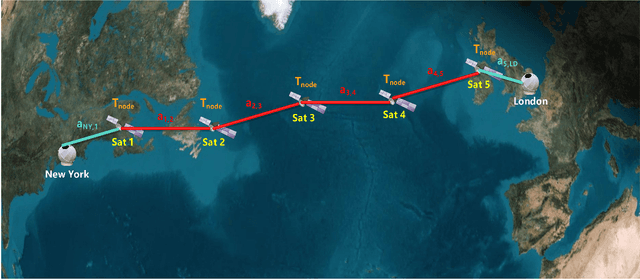
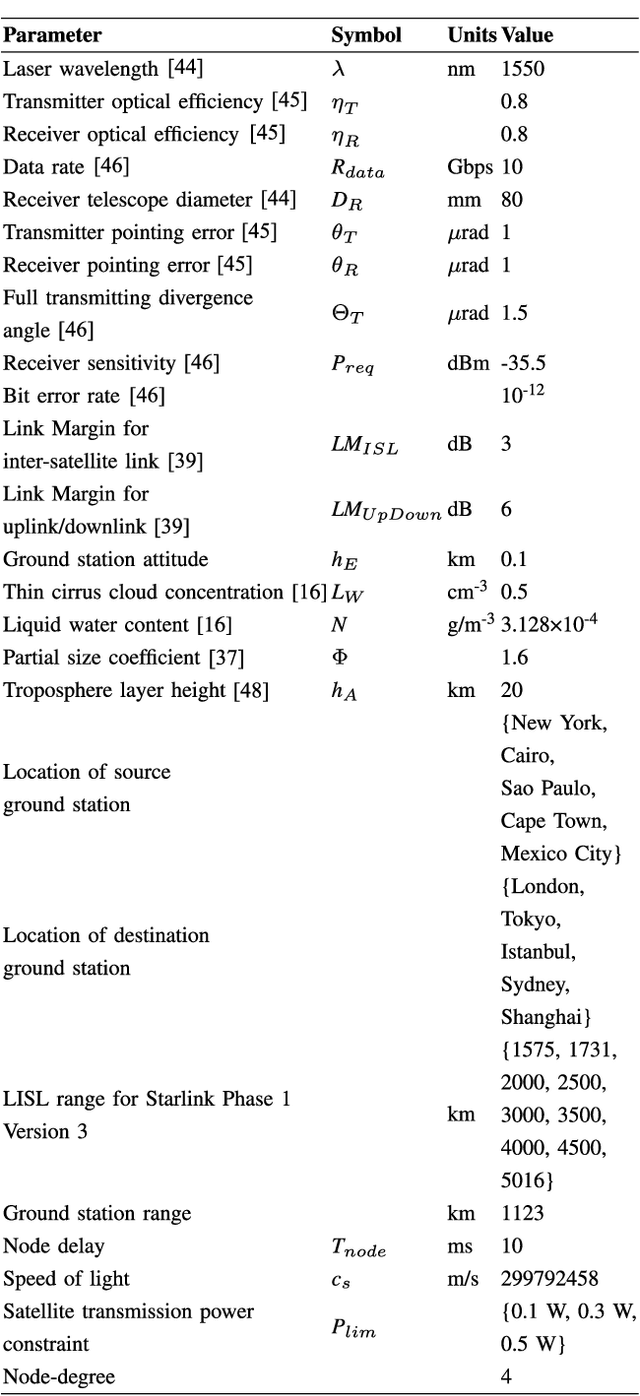
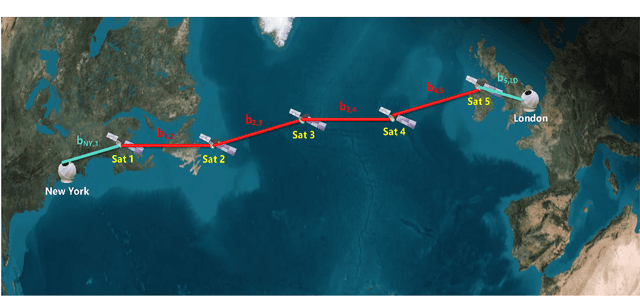
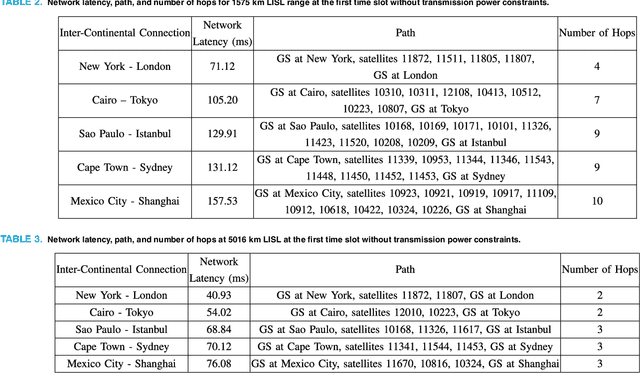
Abstract:In free-space optical satellite networks (FSOSNs), satellites connected via laser inter-satellite links (LISLs), latency is a critical factor, especially for long-distance inter-continental connections. Since satellites depend on solar panels for power supply, power consumption is also a vital factor. We investigate the minimization of total network latency (i.e., the sum of the network latencies of all inter-continental connections in a time slot) in a realistic model of a FSOSN, the latest version of the Starlink Phase 1 Version 3 constellation. We develop mathematical formulations of the total network latency over different LISL ranges and different satellite transmission power constraints for multiple simultaneous inter-continental connections. We use practical system models for calculating network latency and satellite optical link transmission power, and we formulate the problem as a binary integer linear program. The results reveal that, for satellite transmission power limits set at 0.5 W, 0.3 W, and 0.1 W, the average total network latency for all five inter-continental connections studied in this work levels off at 339 ms, 361 ms, and 542 ms, respectively. Furthermore, the corresponding LISL ranges required to achieve these average total network latency values are 4500 km, 3000 km, and 1731 km, respectively. Different limitations on satellite transmission power exhibit varying effects on average total network latency (over 100 time slots), and they also induce differing changes in the corresponding LISL ranges. In the absence of satellite transmission power constraints, as the LISL range extends from the minimum feasible range of 1575 km to the maximum feasible range of 5016 km, the average total network latency decreases from 589 ms to 311 ms.
Free-Space Optical (FSO) Satellite Networks Performance Analysis: Transmission Power, Latency, and Outage Probability
Dec 08, 2023
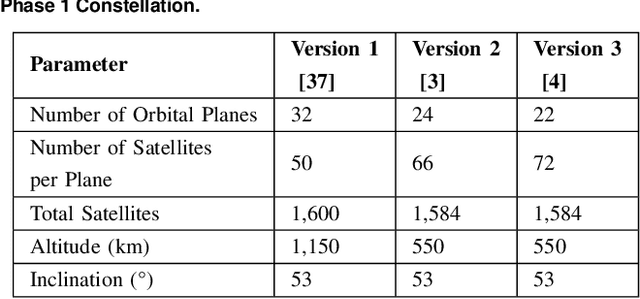

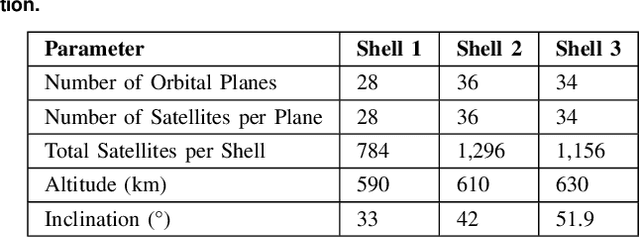
Abstract:In free-space optical satellite networks (FSOSNs), satellites can have different laser inter-satellite link (LISL) ranges for connectivity. Greater LISL ranges can reduce network latency of the path but can also result in an increase in transmission power for satellites on the path. Consequently, this tradeoff between satellite transmission power and network latency should be investigated, and in this work we examine it in FSOSNs drawing on the Starlink Phase 1 Version 3 and Kuiper Shell 2 constellations for different LISL ranges and different inter-continental connections. We use appropriate system models for calculating the average satellite transmission power and network latency. The results show that the mean network latency decreases and mean average satellite transmission power increases with an increase in LISL range. For the Toronto--Sydney inter-continental connection in an FSOSN with Starlink's Phase 1 Version 3 constellation, when the LISL range is approximately 2,900 km, the mean network latency and mean average satellite transmission power intersect are approximately 135 ms and 380 mW, respectively. For an FSOSN with the Kuiper Shell 2 constellation in this inter-continental connection, this LISL range is around 3,800 km, and the two parameters are approximately 120 ms and 700 mW, respectively. For the Toronto--Istanbul and Toronto--London inter-continental connections, the LISL ranges at the intersection are different and vary from 2,600 km to 3,400 km. Furthermore, we analyze outage probability performance of optical uplink/downlink due to atmosphere attenuation and turbulence.
 Add to Chrome
Add to Chrome Add to Firefox
Add to Firefox Add to Edge
Add to Edge